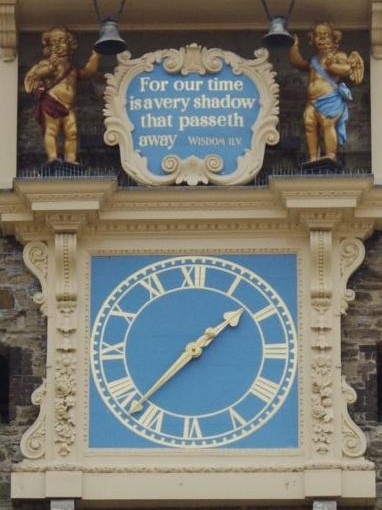Over 5,000 Windings
He Wound Rye Church Clock 5,000 Times In Seven Years
A clipping from a 1930’s Newspaper
Seven years ago today Mr. Frederick Nash, of Rye Parish Church, Sussex started winding the oldest working clock in the world. Ever since then he has turned its giant “key” twice a day. This evening he will wind it for the 5114th time.
But this figure is insignificant when compared with the number of times the pendulum of this ancient clock has swung backwards and forwards.
With a generous allowance of more than a year for stoppages, the pendulum, it is calculated, has swung no fewer than 1,172,600,000 times.
The construction of the clock was begun in 1515 and finished in 1560.
Apart from its great age, this clock is one of the most remarkable ever constructed. It took 45 years to build and cost, in all, the grand sum of £2.10s. It’s inventor, described simply in the parish records as “A Man of Winchelsea,” was paid the magnificent price of 6s. 8d. “for making and fitting the clock, in full settlement of his bargain…” It is the only clock in England, and possibly in the world, with its pendulum swinging through the roof into the body of the church. Its machinery, which weighs several tons, occupies the whole of a large room. Its eight main cogwheels are each one and a half times
the size of a large cartwheel.
For years its 15cwt, pendulum ticked slowly backwards and forwards over the heads of the chroisters – and then it was discovered to be
resting only on a two inch rusty nail!
Mr Hargreaves Graham, the clock expert, who has travelled to countries in widely scattered parts of the world, inspecting clocks, looking up their records and writing books on the subject of clocks, recently expressed his opinion that this is the oldest working clock in the world.
Clockmaker or Blacksmith?
Mr Nash, custodian of the clock, verger and general factotum has some interesting details to relate about the clock.
“It is a wonderfully good-tempered clock”, he said, and has put up with as much as would break most clocks. Some years ago the clock was in a shocking state of disrepair. Nobody had the direct responsibility of looking after it. When anything went wrong, both the local clockmaker and the local blacksmith were called in, as each said it was a job
for the other.
It is amazing how it ever continued to function. I found vital parts of the machinery, almost worn away, and I patched it up as best I could by inserting little pieces of wood and by binding odd pieces
of lead here and there. It was not an easy job, because the clock might have shown its resentment of being interfeared with and have gone on strike, or, rather, “off strike”. How to have started it again was beyond my comprehension. Fortunately, a well-known of firm of clock builders now have a contract to look after the clock, so there is no worry on that score today.
Saved by Londoners
Many people cannot, understand why the clock cost so little to build. It has to be remembered that money was worth very much more in those
days than it is today and it was a general rule in such cases that those who could not give in money must give their services free, Although
the “Man of Winchelsea” was employed on supervising the building of the clock, he was probably only one of perhaps a score engaged on
its construction.
The clock went wrong five years ago and the parish could not raise sufficient money to have it mended, so the vicar appealed to non-resident members of the Rye Golf Club, several of whom are distinguished Londoners, and in five days the necessary £150 was over-subscribed.
Mr Nash took me up winding stone stairs and corridors worn by the dandalled feet of monks long dead, to the giant belfry. Several birds, came in for shelter, lay silently on the floor in the shadows. The
huge wheels moved almost imperceptibly. Then, with a prolonged whirr and the grinding of wheels, the huge metal hammers of the great temor
bell struck their measured blows and sent the hours chasing resonantly over the countryside.
